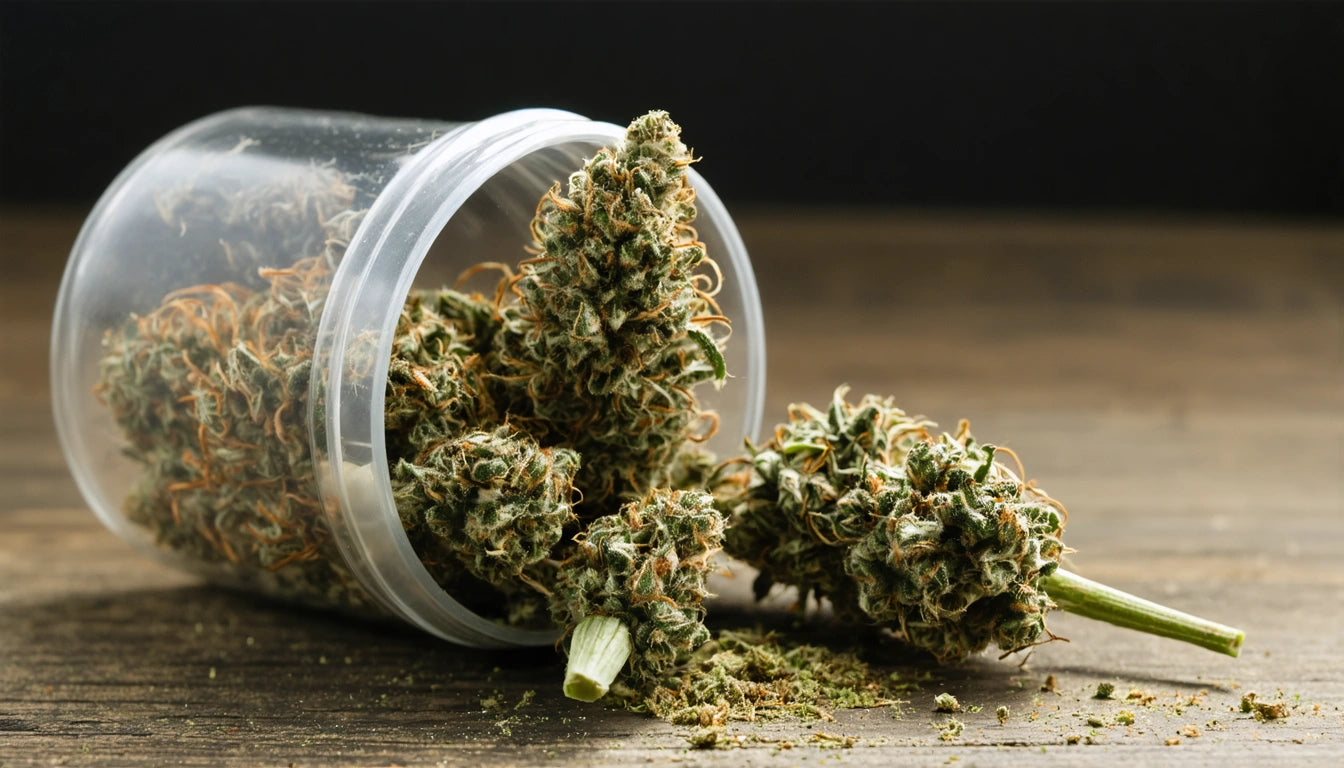Table of Contents
- Understanding Fentanyl Contamination in Cannabis
- Visual Indicators: What Does Fentanyl-Laced Weed Look Like?
- Smell and Taste Differences in Contaminated Cannabis
- Behavioral and Physical Effects of Fentanyl-Contaminated Cannabis
- Testing Methods to Detect Fentanyl in Cannabis
- Prevention and Safety Measures for Cannabis Users
- Protective Strategies and Resources for Cannabis Safety
Identifying Fentanyl-Laced Weed: What to Look For and How to Stay Safe
The concern about fentanyl-laced marijuana has grown significantly in recent years. While verified cases remain relatively rare, understanding how to identify potentially contaminated cannabis is crucial for user safety. This guide explores what fentanyl-laced weed looks like and provides practical safety measures to reduce risks.
Understanding Fentanyl Contamination in Cannabis
Fentanyl is a synthetic opioid that's 50-100 times more potent than morphine. When it comes to cannabis contamination, it's important to separate facts from fiction. According to research on fentanyl-laced marijuana myths and facts, intentional lacing is uncommon but cross-contamination can occur.
While some reports of fentanyl-laced cannabis have been documented, many have later been found to be cases of separate consumption rather than actual contamination. Nevertheless, several states have reported instances of fentanyl contamination, making awareness essential.
Visual Indicators: What Does Fentanyl-Laced Weed Look Like?
Color Abnormalities
Pure cannabis typically displays shades of green with possible purple, orange, or blue tones depending on the strain. When examining what fentanyl looks like in weed, watch for:
- Unusual white or gray powdery substances on the surface
- Inconsistent coloration or strange discoloration patterns
- Crystalline particles that don't match typical trichome appearance
Normal cannabis should have a consistent appearance with visible trichomes (tiny crystal-like structures) that appear naturally frosted rather than powdery or chalky.
Texture Differences
Understanding what natural cannabis looks like helps identify abnormalities. Fentanyl-contaminated marijuana may exhibit:
- Unusual stickiness not typical of resinous cannabis
- Powdery residue that easily detaches when handled
- Uneven texture or unexplained clumping
Smell and Taste Differences in Contaminated Cannabis
Cannabis typically has a distinctive, often pungent aroma with variations depending on terpene profiles. When trying to determine what weed laced with fentanyl looks like, also consider smell and taste:
- Chemical or medicinal odors not typical of cannabis
- Unusually bitter or metallic taste
- Lack of expected cannabis flavor profile
Any unusual sensory experiences when consuming cannabis should be treated as a warning sign. Understanding laced weed indicators includes recognizing these sensory red flags.
Behavioral and Physical Effects of Fentanyl-Contaminated Cannabis
Knowing how to identify if weed has fentanyl also means recognizing atypical effects after consumption:
- Extreme sedation or unconsciousness
- Significantly slowed breathing
- Pinpoint pupils
- Confusion or disorientation beyond typical cannabis effects
- Nausea and vomiting
These symptoms differ substantially from typical cannabis effects and require immediate medical attention as they may indicate opioid exposure.
Testing Methods to Detect Fentanyl in Cannabis
For those concerned about what fentanyl weed looks like and how to detect it, several testing options exist:
- Fentanyl test strips (FTS) can be used to test cannabis
- Laboratory testing through licensed facilities
- Portable drug testing devices (though these vary in accuracy)
Fentanyl test strips were originally designed to test urine for fentanyl but can be adapted to test substances directly. They're relatively inexpensive and available through harm reduction organizations.
Prevention and Safety Measures for Cannabis Users
The best protection against fentanyl-laced cannabis is prevention:
- Purchase cannabis only from licensed, regulated dispensaries
- Avoid black market products with unknown origins
- Inspect all cannabis carefully before use
- Consider keeping naloxone (Narcan) available as a precaution
Proper safety packaging requirements for potentially harmful substances help prevent accidental exposure, especially to children. Similar principles should apply to cannabis storage to minimize contamination and access risks.
Protective Strategies and Resources for Cannabis Safety
Beyond knowing what fentanyl-laced weed looks like, implementing broader safety strategies is essential:
- Never use cannabis alone if there's any concern about its source
- Start with very small amounts when trying new products
- Educate yourself about the risks of contaminated cannabis
- Know the signs of opioid overdose and how to respond
- Store cannabis products in secure, labeled containers away from children and pets
Understanding how cannabis appearance has evolved also helps differentiate between natural variations and potential contamination.
While fentanyl contamination in cannabis remains relatively uncommon, the potentially fatal consequences warrant serious attention. By knowing what to look for and implementing proper safety measures, cannabis users can significantly reduce their risk of exposure to this dangerous synthetic opioid.











Leave a comment
All comments are moderated before being published.
This site is protected by hCaptcha and the hCaptcha Privacy Policy and Terms of Service apply.